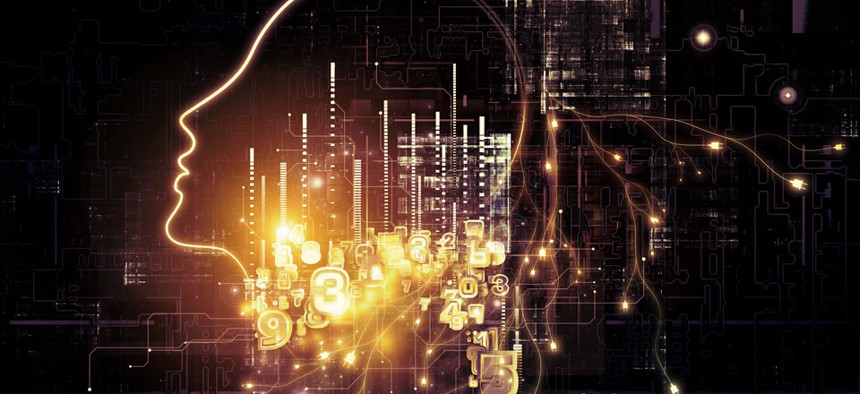How Reverse-Engineering the Brain Could Help Machines Learn

agsandrew/Shutterstock.com
The research arm of the intelligence community wants “human-like proficiency” in processing tasks like one-shot learning, unsupervised clustering and scene parsing
Today’s supercomputers and high-end machines are fast and powerful, but they don’t learn well.
The Intelligence Advanced Research Projects Activity wants to change that, through a new research and development program called MICrONS, which stands for Machine Intelligence from Cortical Networks.
Announced today, MICrONS aims to reverse-engineer algorithms brains use in an effort to “achieve a quantum leap in machine learning that use neutrally-inspired architectures and mathematical abstractions of the representations, transformations and learning rules employed by the brain.”
IARPA’s goal for the MICrONS project is big: The research arm of the intelligence community wants “human-like proficiency” in processing tasks like one-shot learning, unsupervised clustering and scene parsing. Imagine an algorithm-driven machine that could, for example, collect data sets relevant to its mission based on its own volition.
“The program is designed to facilitate iterative refinement of algorithms based on a combination of practical, theoretical, and experimental outcomes: performers will use their experiences with the algorithms' design and performance to reveal gaps in their understanding of cortical computation, and will collect specific neuroscience data to inform new algorithmic implementations that address these limitations,” the IARPA announcement states.
IARPA will collect proposals from companies for the five-year program, but will split the program into three technical areas. Companies will be allowed to bid on any or all three technical areas.
The complexity of such an R&D program wouldn’t have been possible a few years ago. New tools and techniques in how neuroscientists analyze and map the human brain will allow scientists to potentially “interrogate the operation of mesoscale cortical computing circuits.”
In other words, a more detailed view of a brain in action might one day lead to much smarter machines.
(Image via agsandrew/Shutterstock.com)






